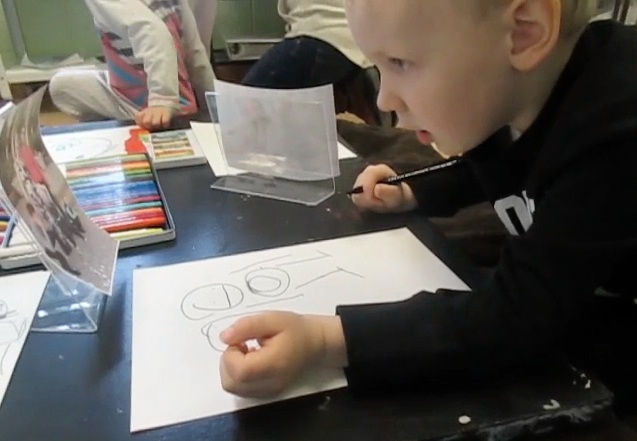 In this video, four-year-old Matthew draws members of his family, using a photograph to support him. He begins by drawing his dad, starting with his head.
In this video, four-year-old Matthew draws members of his family, using a photograph to support him. He begins by drawing his dad, starting with his head.
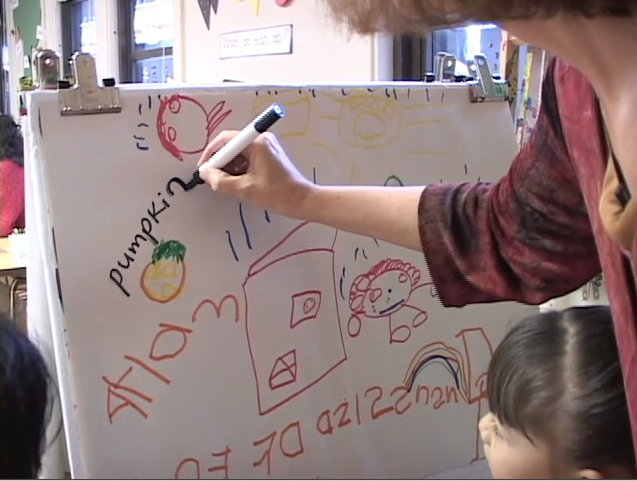 Ariam seems pleased to share her new picture, hand-drawn family scenes that include many details. The teacher might think from these details that Ariam is ready to place print with her picture, and the teacher follows this lead by writing individual words for the child in a deliberate manner.
Ariam seems pleased to share her new picture, hand-drawn family scenes that include many details. The teacher might think from these details that Ariam is ready to place print with her picture, and the teacher follows this lead by writing individual words for the child in a deliberate manner.
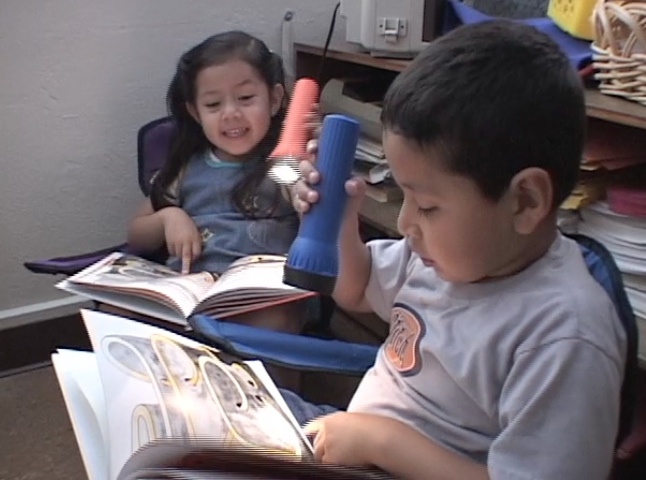 Elizabeth, Eduardo and Emily appear in this video. They are each four years old. Spanish is the predominant language spoken in their homes. Elizabeth and Eduardo have a copy of the book, Whose Mouse Are You? with predictable text.
Elizabeth, Eduardo and Emily appear in this video. They are each four years old. Spanish is the predominant language spoken in their homes. Elizabeth and Eduardo have a copy of the book, Whose Mouse Are You? with predictable text.
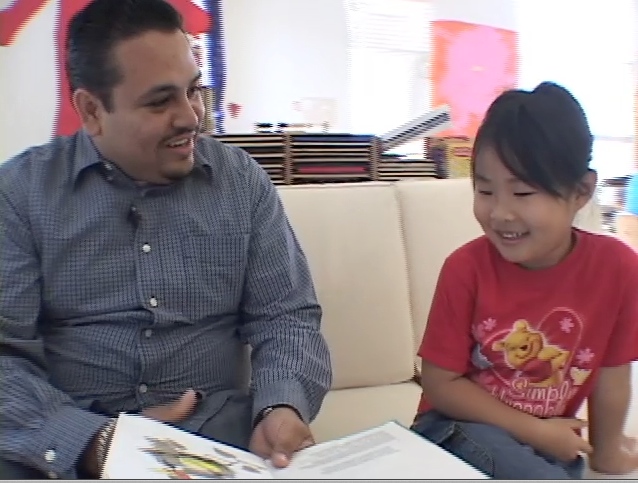 Jenny, a young dual language learner, who speaks Chinese and English, asks her teacher to read a book.
Jenny, a young dual language learner, who speaks Chinese and English, asks her teacher to read a book.
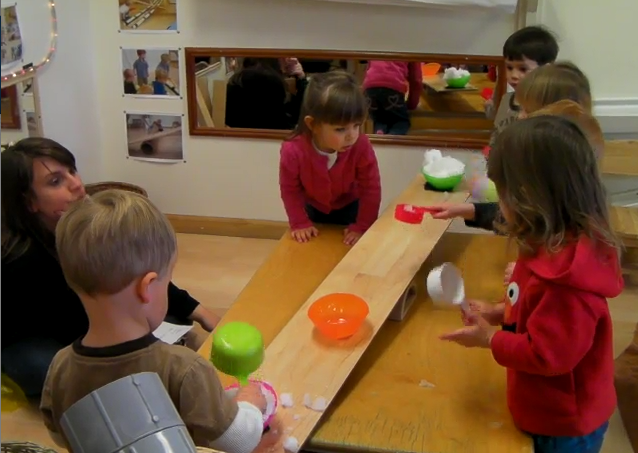 The teacher in this video deliberately holds the children to one question, how can we make the up side of the plank (on a fulcrum) go down without pushing on the up side? While the use of passive weight to make a plank move
The teacher in this video deliberately holds the children to one question, how can we make the up side of the plank (on a fulcrum) go down without pushing on the up side? While the use of passive weight to make a plank move
Pages